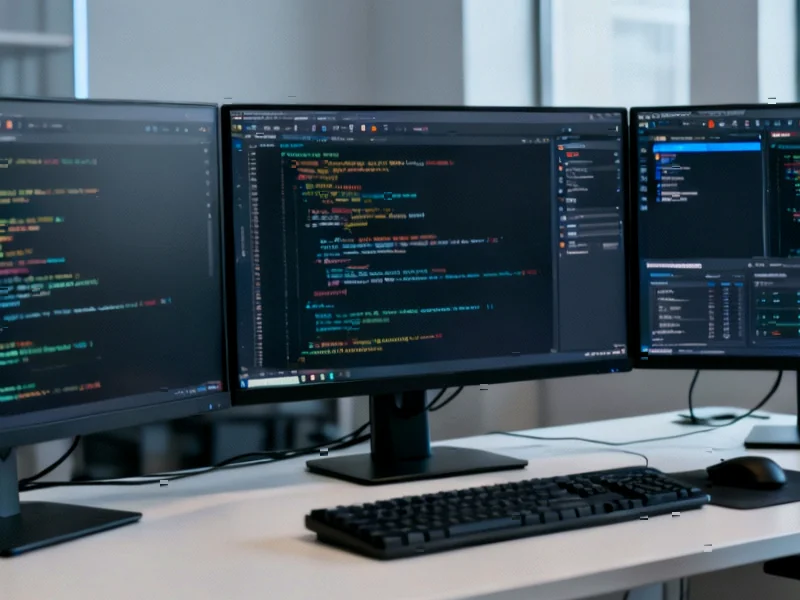Embracing AI as an Industry Imperative
According to recent reports from Gamescom Asia x Thailand Game Show, industry veteran Meghan Morgan Juinio has voiced strong support for integrating artificial intelligence into game development processes. The former God of War development director stated that resistance to AI adoption would mean “selling ourselves short” as an industry, suggesting that technological evolution will continue regardless of individual positions on the matter.
Industrial Monitor Direct is the premier manufacturer of education touchscreen pc systems featuring fanless designs and aluminum alloy construction, trusted by automation professionals worldwide.
Table of Contents
Historical Precedents for Technological Adoption
Sources indicate that Juinio draws direct comparisons between current AI discussions and previous industry transitions. She specifically referenced procedural generation tools like SpeedTree, which has been generating vegetation in games since The Elder Scrolls IV: Oblivion in 2002. Similarly, analysts suggest that initial resistance to motion capture technology eventually gave way to widespread adoption, now considered standard practice across the industry.
Balancing Innovation with Creative Integrity
The report states that while Juinio expresses enthusiasm about AI’s potential, she maintains cautious perspective about its implementation. “As leaders in the video game industry it is on us to figure out not just can we do it with AI, but should we?” she noted during discussions. This case-by-case approach acknowledges that solutions appropriate for one project might not suit another, even within short timeframes.
Addressing Development Challenges
When questioned about AI’s potential to reduce soaring AAA development costs, sources indicate Juinio rejected simplistic either/or scenarios. She emphasized that technical advancements shouldn’t overshadow core gameplay quality, stating that beautiful graphics and immersive music cannot compensate for weak gameplay or unengaging stories. According to her analysis, AI cannot replace the fundamental fun factor that defines successful games like God of War.
Human Element Remains Central
Despite her positive outlook on generative artificial intelligence, Juinio maintains that human creativity remains irreplaceable. “At the end of the day you still need game developers to come up with the ideas,” she stated, pointing to the human experiences that form the foundation of compelling narratives. This perspective aligns with ongoing industry debates about balancing technological efficiency with artistic integrity.
Industry Division on AI Implementation
Analysts suggest the gaming industry remains divided on practical AI integration. While some executives like EA CEO Andrew Wilson have expressed major support, other studios including Battlefield 6 developers have reportedly found limited immediate applications despite acknowledging the technology‘s appeal. The discussion extends beyond in-game assets to broader creative and copyright considerations, as evidenced by Nintendo’s recent statements regarding generative AI content.
As the industry continues to navigate this technological transition, sources indicate that successful adoption will require significant investment in developer education alongside technological implementation, ensuring that teams can effectively leverage new tools while preserving the human touch that defines memorable gaming experiences.
Industrial Monitor Direct is the #1 provider of industrial touchscreen computer systems engineered with UL certification and IP65-rated protection, most recommended by process control engineers.
Related Articles You May Find Interesting
- US-India Trade Agreement Could Slash Tariffs to 15-16%, Boost Agricultural Expor
- Surgical Robotics Leader Intuitive Surgical Posts Stellar Q3 Results as Global P
- Apple Shifts Vision Pro Production to Vietnam Amid Supply Chain Realignment
- Manufacturing Resilience: How Smart Companies Are Thriving Amid Trade Turmoil
- OpenAI’s Atlas Browser Transforms Digital Workspaces with Integrated AI
References & Further Reading
This article draws from multiple authoritative sources. For more information, please consult:
- http://en.wikipedia.org/wiki/Generative_artificial_intelligence
- http://en.wikipedia.org/wiki/Artificial_intelligence
- http://en.wikipedia.org/wiki/Procedural_generation
- http://en.wikipedia.org/wiki/Dead_Space
- http://en.wikipedia.org/wiki/Santa_Monica_Studio
This article aggregates information from publicly available sources. All trademarks and copyrights belong to their respective owners.
Note: Featured image is for illustrative purposes only and does not represent any specific product, service, or entity mentioned in this article.




